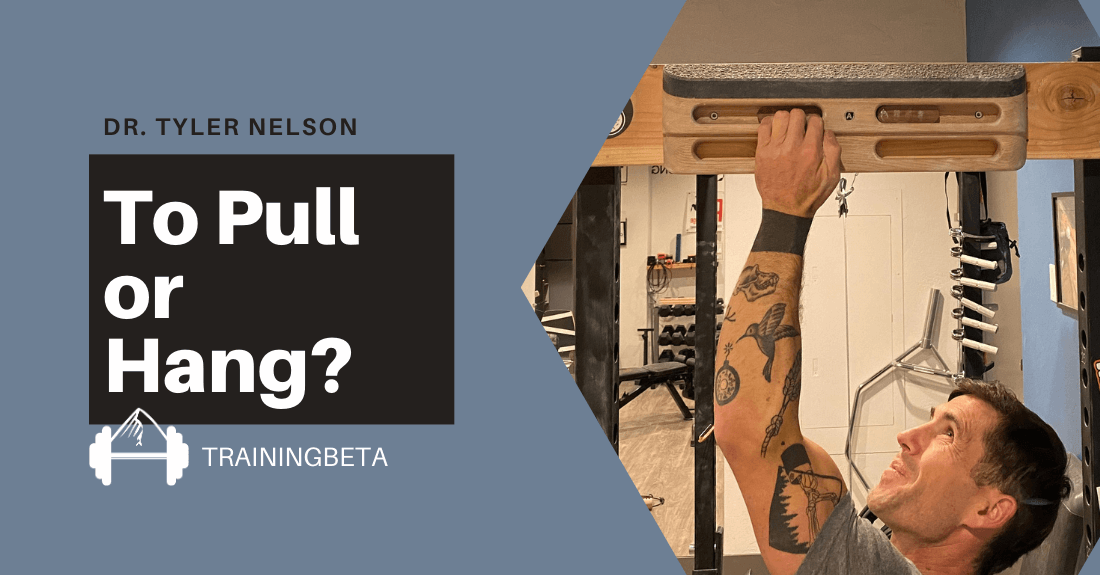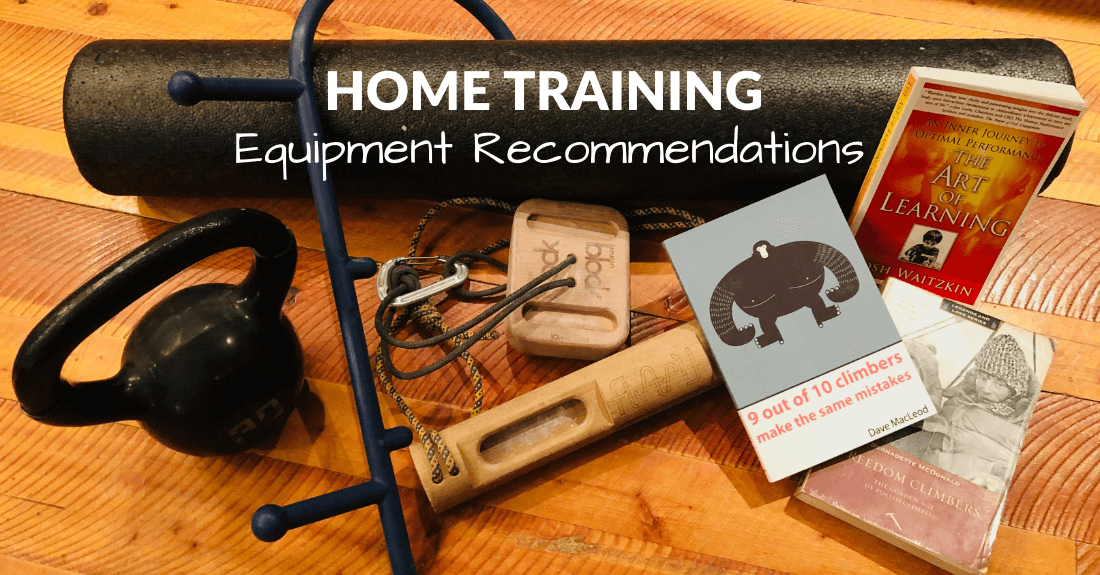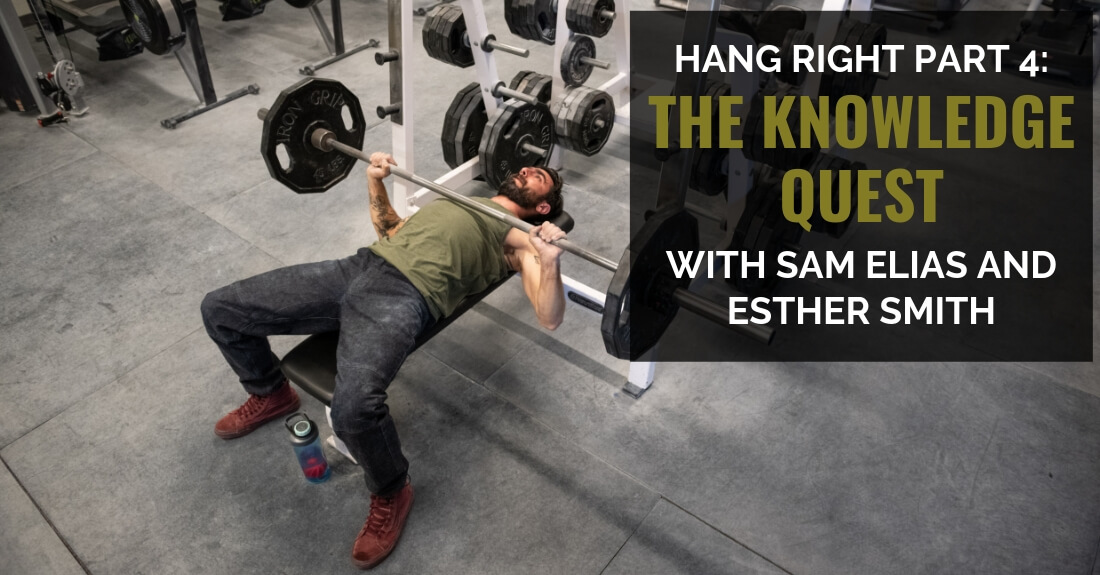This review of FrictionLabs chalk was kindly written by Dan Mirsky. Dan has redpointed 30+ 5.14 rock climbs all across the country, so he knows the importance of having good, reliable chalk. Don’t miss the discount they’re giving TrainingBeta readers at the bottom of the review!
He takes a slightly different approach to this chalk review, hope you enjoy!
Enter Dan…
Okay, to start with, if you haven’t at least heard of FrictionLabs chalk yet, it’s time for you to put some on your hands, climb out from underneath that rock you have been projecting and join the rest of us in 2015.
I’m guessing though, that you have heard of FrictionLabs chalk, that you’ve probably read other FrictionLabs chalk reviews and they have maybe all told you the same thing: it’s the best and you should be using it. Today, I’m going to explain things a little bit differently.
Here’s the deal:
FrictionLabs chalk is better than every other chalk on the market. This is not only the opinion of yours truly; this is science.
We all know science can’t be wrong…
This is what science tells us:
Chalk is mined as dolomite and is made up of Magnesium Carbonate, Calcium Carbonate, and numerous other compounds. For our purposes as climbers, Magnesium Carbonate is the good stuff, and Calcium Carbonate is the less good stuff. Moisture attaches itself differently to their molecular structures and this is what we as climbers can feel. When moisture bonds to Calcium Carbonate it attaches itself to the exterior of the molecule, so when we’re climbing we experience a slippery or slimy feeling. It is literally moisture on the outside of our chalk that gets in the way of it attaching to our hands, leaving them feeling sweaty.
Magnesium Carbonate attaches moisture to the inside of its molecular structure; this means no layer of slime in between you and your chalk. Chalk with a higher concentration of Magnesium Carbonate is therefore more effective at drying your hands and staying on your hands longer, in other words, better chalk!
FrictionLabs claims to have the highest concentration of Magnesium Carbonate of any climbing chalk on the market. Twice the amount of the next best chalk, in fact.

Chalks tested include Bison Ball, Metolius Super Chalk, Evolv, and Metolius Block -(Graph courtesy of frictionlabs.com)
Not into science or studies conducted by a company that ends up coming out looking the best in said study? That’s fair, me neither.
So, I put Frictions Labs chalk to the test. Here’s what I found:
Frictionlabs chalk unquestionably dries my hands better and stays on my hands longer than any other chalk.
And I have tried them all.
What I found most impressive is the way FrictionLabs chalk feels. It actually feels tacky or sticky. Once I have applied FrictionLabs chalk to my hands it feels as though it bonds to my skin in a malleable way. It doesn’t create a dry dusty film of excess chalk; therefore it increases my friction and decreases the amount of chalk I wipe off on my pant leg (if you have ever watched me climb you would know this is where at least 50% of my chalk ends up).
Did I mention, FrictionLabs chalk is the best climbing chalk on the market, by far?
Let’s be honest and get to the real matter at hand, which is what all the dirtbag rock climbers have been thinking since the first word of this review…
“How much do I have to pay for this magical Unicorn Dust?”
(note: FrictionLabs actually does have a blend they call Unicorn Dust…).
Since we’re being honest, at first glance, FrictionLabs chalk is expensive. But wait, don’t stop reading. There’s more to it than that.
If you buy a 2.5-oz bag of FrictionLabs chalk it will cost you $8 whereas a 2-oz block of our beloved, tried and true, Frank Endo chalk costs $2. Doing some hard math we come up with: FrictionLabs chalk is almost 4 times more expensive than Endo chalk. That being said, FrictionLabs actually promotes purchasing a chalk membership where you receive chalk each month and the more you buy the more affordable it becomes. If you sign up for a 7.5-oz bag/month (the largest amount available) for example, you pay $14. If we plug these numbers back into our complicated formula you see that FrictionLabs chalk still costs almost twice as much as Endo chalk.
So to decide whether it is worth switching to FrictionLabs chalk, we need to determine whether the Benefit gained from using FrictionLabs is worth the Cost.
How are we going to do this? We are going to perform a Cost Benefit Analysis (in a former life I was an Economics major, so you can trust me). For the purpose of this study we are going to assume that Cost and Benefit have a 1 to 1 relationship; in other words your willingness to pay for a 1% increase in benefit is a 1% increase in cost, again it’s Economics…
For our study we are saying that the cost of FrictionLabs chalk is 100% more than Industry Standard (IS) chalk. Now let’s find out how much benefit we get from using FrictionLabs chalk and see if it out weighs the cost difference. Make sense? Here’s an example to help.
You are at a gas station and you need to put gas in your high performance vehicle. Whether you buy 87-Octane gas or 91-Octane gas you are going to get the same volume of gas. The 91-Octane gas costs more than the 87 but if you pay more for the better gas you get increased gas mileage and better performance with less maintenance. You have to decide whether those benefits are worth the added cost. So in this situation where we are the high performance vehicle (I know I am), and chalk is our gas- is the benefit worth the cost? Let’s find out.
Let’s start with mileage.
After using FrictionLabs chalk for the past 2 months I am certain that I have used significantly less chalk than when I use other brands.
I chalk compulsively when on a sport route. Half of the time I am wiping excess slimy feeling chalk off my hands before I dip into my chalk bag to reapply more slimy feeling chalk, which I then wipe off and so on. With FrictionLabs chalk I don’t have that slimy feeling which means I have to wipe my hands on my pants less and apply less chalk overall. I have actually found myself compulsively dipping into my chalk bag less.
Keeping track of my chalk consumption for one month of full-time climbing I feel confident saying I go through 25% less chalk when I am using FrictionLabs. This is huge. Or to use our gas analogy my mileage is 25% better. Another way to look at it is to get the same mileage out of IS chalk I would have to purchase 25% more chalk. So right off the bat we can say that FrictionLabs has 25% greater benefit at a given volume.
Now, let’s consider performance.
I believe that FrictionLabs chalk, just like higher quality gas, not only takes your fine tuned machine further but also increases its performance. Climbing translation as I see it: due to the higher concentration of Magnesium Carbonate, FrictionLabs chalk actually gives me better friction. Instead of an insecure greasy film of chalk I feel bonded to my chalk and the chalk itself feels tacky. The chalk stays on my hands longer. If you apply FrictionLabs chalk to one hand and anything else to your other hand and then boulder for 2 minutes you will be shocked.
Your FrictionLabs ‘chalk hand’ is dry, has chalk on it and still has friction; your other hand… not so much.
Here is a photo from my buddy Kris Hampton that illustrates the point exactly.

Kris Hampton comparing another brand’s chalk (right hand) to FrictionLabs chalk (left hand) (photo courtesy of powercompanyclimbing.com)
What does this tell us?
FrictionLabs chalk gives you better friction for longer.
We need friction to send rock climbs, therefore FrictionLabs chalk helps you send rock climbs.
That was pretty easy.
But how much does it really help? This is a tougher question. There are so many variables that come into play when we talk about performance. But when we think about it, friction is certainly one of the biggest factors in our success or failure in climbing.
If our friction is better we don’t have to hold on as hard, we slip less and so we conserve energy. If our friction is better, we can use worse holds, which will allow us to climb harder. If our hands are drier and our friction is better we will have to stop and chalk less, which allows us to climb more efficiently and again conserve energy. If our friction is better and we are less worried about slipping, we can climb more confidently.
Determining a percentage for the performance benefit is a lot of guess work and will certainly vary from person to person. For me, after using FrictionLabs chalk for the past two months bouldering, gym climbing and sport climbing I am prepared to say I see a 3% increase in my performance from using FrictionLabs chalk. To some that might seem like a small gain, to me that is huge. How huge? In dollars and cents, my willingness to pay for a 1% performance increase is 10X.
In other words, I am willing to pay an additional 30% for chalk that gives me a 3% gain in chalk-related performance. It therefore has 30% greater benefit to me than other chalk (in economics we show how much we like something by our Willingness to Pay For It). If we add that to our Mileage Benefit (25%), FrictionLabs chalk now has 55% more benefit than IS chalk.
Still with me? There’s more.
Continuing on with our gas analogy, the other advantage you receive from better gas is less maintenance on your car; better gas burns cleaner and therefore dirties your engine less. The general concept is true for chalk as well. Better chalk means less maintenance on your skin.
Really? How? If your skin stays drier it stays harder and tougher. Soft moist skin, oozes, gets thin and hurts so badly you simply can’t climb anymore and if that is all that happens, consider yourself lucky. When it gets really bad you wear holes/rip flappers, then you start bleeding, then you can’t climb for days without taping, then life sucks.
Again, the degree to which better chalk affects you and your skin is personal. My skin is a big issue for me, I split and crack when it is too dry and cold and I sweat and ooze when I get too hot. Too often my skin ends my climbing days and that is frustrating!
After climbing on Friction Labs chalk for a month in Hueco Tanks (skin intensive bouldering) and two weeks in Smith Rock (skin intensive sport climbing) I am prepared to estimate that I have 7% less skin issues when using Friction Labs chalk.
So what am I willing to pay for that? A LOT! To keep things simple I will use the same 10x multiplier. In other words for 7% less skin issues I am willing to pay 70% more or the chalk is of 70% greater benefit to me (note this is an inverse relationship, (ie) less maintenance = higher benefit) If we add this in with our benefit value so far (55%) we have a sum of 125%. This means, Friction Labs chalk is 125% greater in value than IS chalk.
Ok, that was a lot. Let’s review.
FrictionLabs Gets 25% better mileage + increases my performance by 30% (3% percent actual increase X 10 {performance increase value multiplier}) + 70% skin maintenance decrease (7% X 10{value multiplier}) = 125% Greater Benefit at an equal volume. Now we take the increased benefit and directly compare it to the cost difference. We will use subtraction since what we want to find out is the difference between Benefit (B) and Cost (C). We get: 125B – 100C = 25B
Did you catch that?
The benefits I receive (and you too can receive) from FrictionLabs chalk not only offset the difference in cost but exceeds it by 25%. Another way to look at it is this. Remember for our study we are saying cost and benefit have a 1 to 1 relationship. So 25% greater benefit could also be seen as 25% less cost. That’s right, I just said FrictionLabs chalk is actually 25% cheaper than IS chalk due to the increased benefits you receive from using it.
BOOM, FrictionLabs chalk for the win!
The only thing left to decide is which blend is for you. There are 3 blends which are the same molecularly, the only discernable difference is feel. Basically you have super chunky (Bam Bam), Chunky (Gorilla Grip) and fine (Unicorn Dust). I personally like the Gorilla grip: its textured enough to rub in between my fingertips without feeling like nails on a chalkboard but its not so hard that I get pumped trying to break it up.
My suggestion, try them all and see which you like best. Don’t forget to check out the latest and greatest from the FrictionLabs guys: Secret Stuff! It’s a similar concept to liquid chalk but again works way better!!
Exclusive Offer for TrainingBeta
So, you can see that we’re pretty die-hard fans of FrictionLabs after our unbiased and VERY scientific testing. In fact, here’s a private email that TrainingBeta’s founder, Neely, sent them a while back.
You sent me some chalk last year when I wasn’t climbing due to my shoulder injury. I had surgery in November and started climbing again recently and was finally able to use the chalk. And then I ran out. And then I realized how fucking awesome your chalk is! Great work – the other stuff sucks and I’m a convert. I just ordered another sample pack so I can figure out which one I like the most.– Neely Quinn, TrainingBeta founder
Because we love them so much and we want you to have an opportunity to try out their stuff, we asked them to give you a discount. They were kind enough to offer you this exclusive deal, which you will find nowhere else.
About Dan Mirsky:
Dan Mirsky is a 32 year old New Yorker who got stuck in Colorado 13 years ago. He has been
![]() climbing in Rifle for the last 11 years and has no plans to ever stop. When he is not climbing in Rifle, Dan can be found trail running through the woods or bartending in a restaurant in Carbondale, CO. In the colder months he and his girlfriend Katy move into their Airstream trailer and leave Colorado in search of warmer temperatures and great climbing.
climbing in Rifle for the last 11 years and has no plans to ever stop. When he is not climbing in Rifle, Dan can be found trail running through the woods or bartending in a restaurant in Carbondale, CO. In the colder months he and his girlfriend Katy move into their Airstream trailer and leave Colorado in search of warmer temperatures and great climbing.
After 10 years of hard sport climbing Dan still considers himself a student, learning how to be a better rock climber every day. He has redpointed 30+ 5.14 rock climbs up to 5.14c all across the country including Route of All Evil (14b), 50 Words for Pump (14b), Bad Girls Club (14c), Lungfish (14b), and an FA of Solid Gold (14c), the direct line to Golden, to name a few. He is always psyched to climb and psyched to see others succeed. He also has an impressive memory for beta, so if you’re projecting something he’s done he can give you all the details….













Seriously, That explained alot. Thx bro
I am seeing a price of $10 for the sample pack. Is there a code I need to apply to get it for $5?
I have tried the friction labs chalk and agree to its efficacy. however, I believe that is a poor graph because it only compares the friction lab chalk to the worse chalk companies out there. In my opinion, frank endo is a pretty strong competitor with friction labs.
[…] white powder you’d like to smear all over your hands? Check out this comprehensive review of Friction Labs Chalk from Training Beta – and learn more about chalk than you (probably) know […]
Nice one, Dan! That was by far the most scientific study of chalk by you that I have ever read. I’m sold.